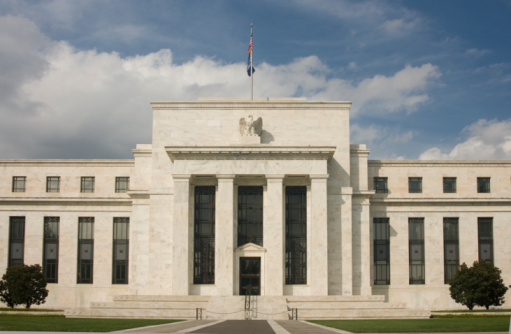As recently as a month ago, the consensus among economists was the Federal Reserve would cut back its $85 billion a month asset purchasing program. The economy appeared to be doing well enough that the Fed could begin to withdraw from the revolutionary program. Now, just a few weeks later, many experts believe that the $85 billion level could be in place well into next year because of the effects of the government shutdown, among other things. What is rarely mentioned is that the Fed could increase the size of the program as a counterweight to a drop in federal spending, which may become permanent.
It is impossible to gauge what the shutdown cost the economy in terms of GDP growth and employment. Certainly the next monthly jobs report, and perhaps the one after that, will reveal some increase in joblessness among government employees and firms that rely on government spending. The range of damage to gross domestic product among forecasts runs from zero to as high as several tens of a percent. And because the overall improvement in the economy may have lost momentum from mid-year, the effects of the shutdown could be magnified.
It is open to debate whether the $85 billion Fed asset program has worked at all. Clearly the members of the Fed’s board believe it has, although there has been a public splintering among them about how long the purchasing program should remain. That debate boils down mostly to the simple issue of whether unemployment will stay fairly high or will come down toward 6% relatively quickly.
The hope of a fast improvement in the jobs situation has begun to evaporate. There will be another battle over the federal budget in Congress, and it already has begun. The debt limit could be reached again as early as March. Another government shutdown may begin in late winter. Once again, hundreds of thousands of federal workers could be temporarily sidelined. The Fed will take into account the chance that the damage done in the past several weeks could be duplicated or even magnified in three or four months.
The $85 billion a month asset purchasing program could be increased in the face of more “headwinds.” A majority of Fed members may think that by mid-2014, GDP growth will slip back toward nil and unemployment could begin to tick higher. At that point, the Fed will be left with only one weapon — an increase in the use of the one it already has.
The Average American Is Losing Momentum On Their Savings Every Day (Sponsor)
If you’re like many Americans and keep your money ‘safe’ in a checking or savings account, think again. The average yield on a savings account is a paltry .4%1 today. Checking accounts are even worse.
But there is good news. To win qualified customers, some accounts are paying more than 7x the national average. That’s an incredible way to keep your money safe and earn more at the same time. Our top pick for high yield savings accounts includes other benefits as well. You can earn a $200 bonus and up to 7X the national average with qualifying deposits. Terms apply. Member, FDIC.
Click here to see how much more you could be earning on your savings today. It takes just a few minutes to open an account to make your money work for you.
Thank you for reading! Have some feedback for us?
Contact the 24/7 Wall St. editorial team.


